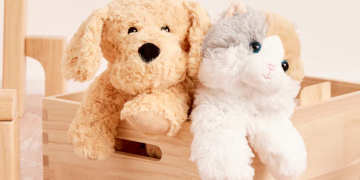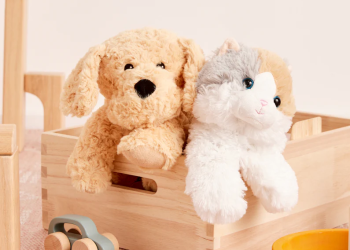Cats are naturally clean animals, and most instinctively understand how to use a litter box. However, successful litter training requires a combination of the right setup, positive reinforcement, and consistency. Whether you’re introducing a kitten to a litter box or retraining an older cat, here’s a detailed guide to ensure success.
Why Litter Training is Important
Encourages Cleanliness
Providing a designated area for elimination ensures your cat maintains a clean environment, both for them and for you.
Reduces Behavioral Issues
Proper litter training minimizes inappropriate elimination behaviors, which can lead to stress or damage within your home.
Strengthens the Bond
Helping your cat understand and use their litter box creates trust and fosters a positive relationship between you and your pet.
Setting Up the Litter Box
Choosing the Right Litter Box
- Size: Ensure the litter box is large enough for your cat to move around comfortably. Larger boxes are ideal for bigger breeds.
- Type: Open boxes provide easy access, while covered boxes offer privacy. Choose based on your cat’s preference.
- Entry Point: For kittens or senior cats, use a box with low sides to make entry easier.
Selecting the Right Litter
- Clumping vs. Non-Clumping: Clumping litter is easier to clean, but some cats prefer the texture of non-clumping litter.
- Material: Options include clay, silica, and biodegradable materials like corn or pine. Experiment to find what your cat likes.
- Scented vs. Unscented: Many cats prefer unscented litter as strong fragrances can be off-putting.
Placement of the Litter Box
- Quiet Location: Place the box in a low-traffic, quiet area where your cat can feel safe.
- Accessibility: Ensure the box is easily accessible, especially for kittens or older cats.
- Multiple Boxes: In multi-cat households, provide one box per cat plus an additional box to avoid territorial disputes.
Training Your Cat to Use the Litter Box
Introducing the Litter Box
- Show Them the Box: Gently place your cat in the litter box to familiarize them with it.
- Encourage Exploration: Let your cat sniff and explore the box without forcing them to stay.
- Demonstrate Digging: Use your hand to mimic digging in the litter to show your cat what to do.
Positive Reinforcement
- Reward Success: Praise your cat or offer a treat when they use the litter box correctly.
- Avoid Punishment: Never scold your cat for accidents, as this can create fear and worsen the problem.
Timing Matters
- Place your cat in the litter box after meals, naps, or playtime, as these are common elimination times.
Troubleshooting Common Issues
Accidents Outside the Box
- Clean Thoroughly: Use an enzyme-based cleaner to remove odors and discourage repeat accidents.
- Identify the Cause: Accidents may signal stress, medical issues, or dissatisfaction with the litter box setup.
- Adjust Placement: If accidents occur frequently, try relocating the box to a more appealing spot.
Litter Preferences
- Experiment with Litter Types: If your cat avoids the box, they may dislike the litter. Gradually transition to a new type if necessary.
- Depth of Litter: Most cats prefer 2-3 inches of litter. Too much or too little can be off-putting.
Multi-Cat Challenges
- Territorial Behavior: Ensure there are enough litter boxes to prevent conflicts.
- Monitor Usage: If one cat is dominant, ensure submissive cats have access to their own box in a safe location.
Maintaining a Clean Litter Box
Daily Maintenance
- Scoop Regularly: Remove waste at least once a day to keep the box clean and inviting.
- Check for Clumps: Ensure no clumps remain, as these can deter your cat from using the box.
Weekly Deep Cleaning
- Empty the Box: Dispose of all litter and scrub the box with warm water and mild soap.
- Avoid Strong Scents: Rinse thoroughly to remove any soap residue that might deter your cat.
- Replace with Fresh Litter: Fill the box with clean litter to maintain a pleasant environment.
Addressing Medical Concerns
When to See a Vet
If your cat avoids the litter box despite proper training, it could indicate a medical issue such as:
- Urinary tract infections
- Bladder stones
- Constipation
- Stress-related disorders
Signs of Discomfort
Watch for signs of pain or discomfort, such as straining, frequent trips to the box, or vocalizing during elimination.
Enhancing the Training Process
Create a Routine
Establish consistent feeding and play schedules to help regulate your cat’s elimination habits.
Provide Enrichment
- Toys and Scratching Posts: Reduce stress and keep your cat engaged, which can improve their overall behavior.
- Interactive Games: Stimulate your cat’s mind and body to create a happy, well-adjusted pet.
Patience and Consistency
Cats may take time to fully adapt to their litter box, especially if they are transitioning from another environment. Stay consistent and patient during the process.
By understanding your cat’s preferences and maintaining a clean, inviting litter box, you can ensure they develop good litter habits that last a lifetime.












